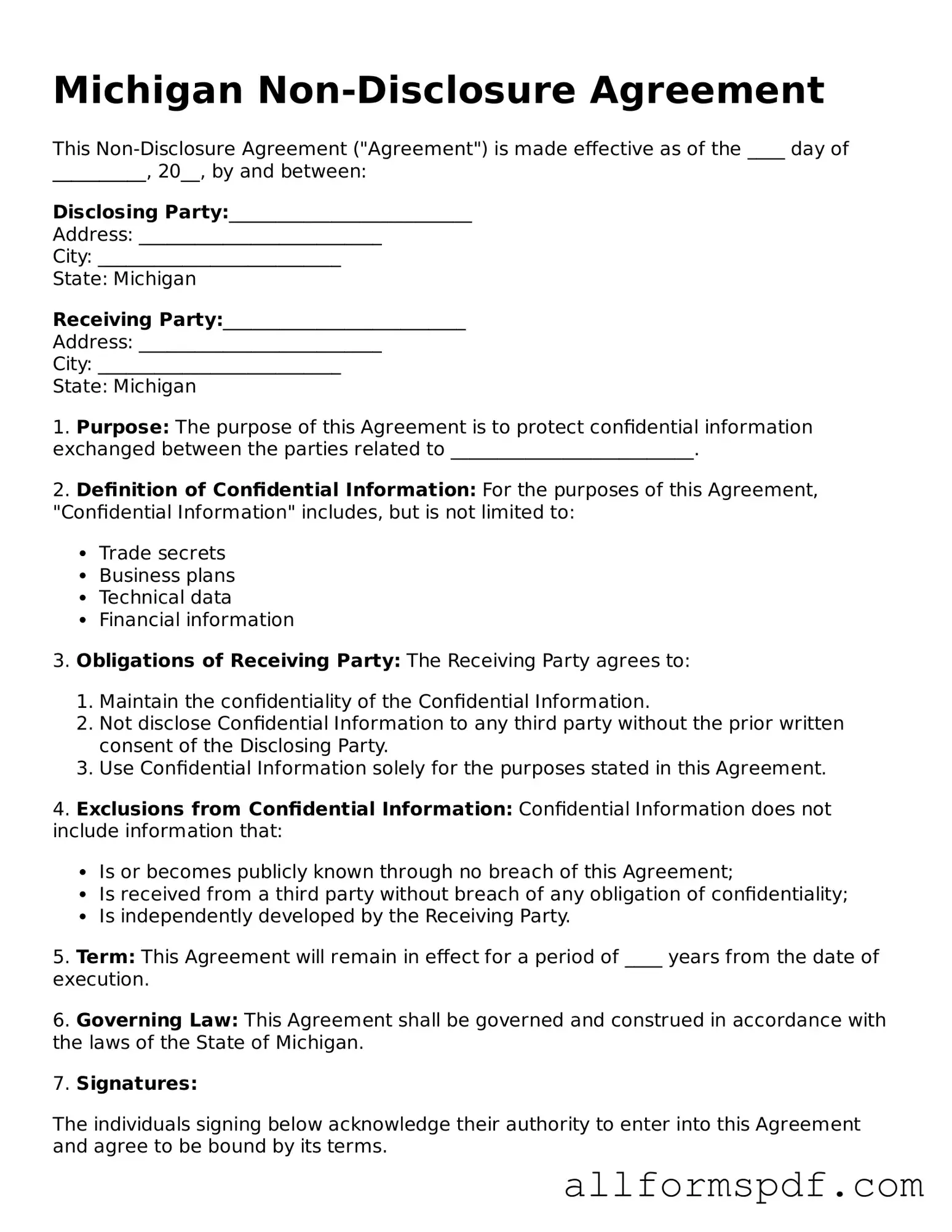Filling out the Michigan Non-disclosure Agreement (NDA) form can be straightforward, but many individuals make common mistakes that can lead to complications. One frequent error is not reading the entire document carefully. It’s crucial to understand every section before signing. A rushed review can result in overlooking important clauses that might affect rights and obligations.
Another mistake is failing to clearly define what information is considered confidential. If the NDA lacks specificity, it can lead to misunderstandings down the line. Parties may assume different things about what is protected, which can create disputes.
People often forget to include the duration of the confidentiality obligation. An NDA should specify how long the information must remain confidential. Without this detail, the agreement may be unenforceable or lead to confusion regarding when obligations end.
Some individuals neglect to identify all parties involved. It’s essential to list every person or entity that will have access to the confidential information. Omitting a party can weaken the agreement’s effectiveness and leave gaps in protection.
Another common oversight is not including the purpose of sharing the confidential information. The NDA should outline why the information is being shared. This clarity helps to ensure that the information is used only for the intended purpose.
Many people also fail to provide a clear process for handling breaches of the agreement. It’s important to outline what happens if a party violates the NDA. This could include penalties or remedies, which can deter breaches and provide a clear course of action if they occur.
Some individuals overlook the importance of having the NDA reviewed by a legal professional. While it may seem unnecessary, a lawyer can identify potential issues and ensure that the agreement complies with Michigan law. Skipping this step can lead to costly mistakes.
Another mistake is not keeping a signed copy of the NDA. After the agreement is executed, it’s vital to retain a copy for personal records. This ensures that all parties have access to the terms if any disputes arise in the future.
Finally, people sometimes assume that verbal agreements are sufficient. An NDA should always be in writing to provide clear evidence of the terms agreed upon. Relying on verbal promises can lead to misunderstandings and challenges in enforcement.
